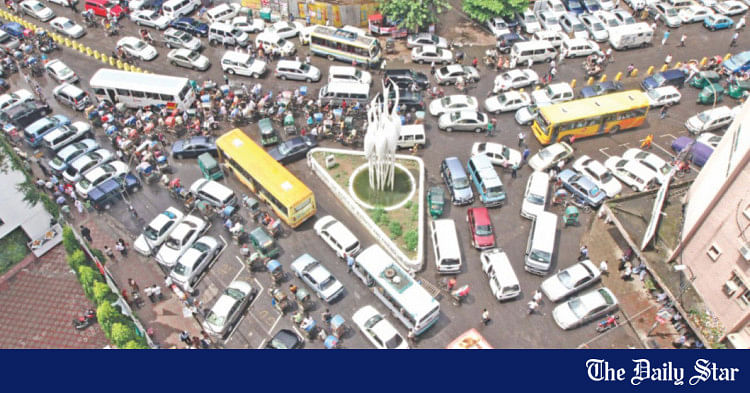Saif
Senior Member
- Joined
- Jan 24, 2024
- Messages
- 16,093
- Likes
- 8,059
- Nation

- Axis Group


Recycling capacity needs to be upped to tackle plastic pollution
THE dismal state of waste management, especially of plastic waste, can hardly be overstated. The limited recycling capacity appears to have exacerbated the situation. World Environment Day this year has placed special an emphasis on plastic pollution. Although Bangladesh has made some strides in...
 www.newagebd.net
www.newagebd.net
Recycling capacity needs to be upped to tackle plastic pollution
26 June, 2025, 00:00
THE dismal state of waste management, especially of plastic waste, can hardly be overstated. The limited recycling capacity appears to have exacerbated the situation. World Environment Day this year has placed special an emphasis on plastic pollution. Although Bangladesh has made some strides in recycling plastic waste, a substantial volume of plastic remains uncollected. An estimated 800,000 tonnes of plastic waste are produced annually and at least 60 per cent is not recycled. A World Bank study says that about 70 per cent of plastic waste is mismanaged and carelessly discarded. A United Nations Environment Programme study says that Bangladesh ranks among the top 10 plastic-polluting countries and is the 7th highest plastic-consuming nation in the world. The issue is further aggravated by a high volume of single-use plastic although Bangladesh is the first country to ban single-use plastics in 2002. About 87,000 tonnes of single-use plastic containers are discarded annually in Bangladesh, most of which finds way to water bodies and waterways.
Research suggests that an estimated 23,000 to 36,000 tonnes of plastic waste are disposed of annually in 1,212 hotspots around canals and rivers in and around Dhaka. Much of this haphazardly dumped waste ends up in rivers and other aquatic systems. Tourist-heavy regions are also plagued by a high concentration of plastic waste and the areas are similarly marked by the absence of effective waste management and recycling mechanism. Although the government has expressed its commitment to reducing plastic usage, it has yet to take any meaningful action. This inaction has contributed to a rise in the prevalence of single-use plastic containers, including items such as food packaging, straws, cotton buds, sachets, coffee stirrers, and bottles for soda, water and soft drinks, along with plastic bags. Experts say that plastic pollution is largely a problem of waste mismanagement, noting that proper recycling can transform waste into wealth. Yet, the recycling industry continues to face significant barriers, including the absence of comprehensive policy support. The adoption of advanced recycling technologies and the enforcement of waste segregation practices, mandated by the Solid Waste Management Rules 2021 but not yet followed by relevant agencies for operational limitations, are crucial in addressing the threat of plastic waste. Industry insiders have also highlighted the need for supportive tax policies and access to soft loans to help foster the growth of the recycling sector.
26 June, 2025, 00:00
THE dismal state of waste management, especially of plastic waste, can hardly be overstated. The limited recycling capacity appears to have exacerbated the situation. World Environment Day this year has placed special an emphasis on plastic pollution. Although Bangladesh has made some strides in recycling plastic waste, a substantial volume of plastic remains uncollected. An estimated 800,000 tonnes of plastic waste are produced annually and at least 60 per cent is not recycled. A World Bank study says that about 70 per cent of plastic waste is mismanaged and carelessly discarded. A United Nations Environment Programme study says that Bangladesh ranks among the top 10 plastic-polluting countries and is the 7th highest plastic-consuming nation in the world. The issue is further aggravated by a high volume of single-use plastic although Bangladesh is the first country to ban single-use plastics in 2002. About 87,000 tonnes of single-use plastic containers are discarded annually in Bangladesh, most of which finds way to water bodies and waterways.
Research suggests that an estimated 23,000 to 36,000 tonnes of plastic waste are disposed of annually in 1,212 hotspots around canals and rivers in and around Dhaka. Much of this haphazardly dumped waste ends up in rivers and other aquatic systems. Tourist-heavy regions are also plagued by a high concentration of plastic waste and the areas are similarly marked by the absence of effective waste management and recycling mechanism. Although the government has expressed its commitment to reducing plastic usage, it has yet to take any meaningful action. This inaction has contributed to a rise in the prevalence of single-use plastic containers, including items such as food packaging, straws, cotton buds, sachets, coffee stirrers, and bottles for soda, water and soft drinks, along with plastic bags. Experts say that plastic pollution is largely a problem of waste mismanagement, noting that proper recycling can transform waste into wealth. Yet, the recycling industry continues to face significant barriers, including the absence of comprehensive policy support. The adoption of advanced recycling technologies and the enforcement of waste segregation practices, mandated by the Solid Waste Management Rules 2021 but not yet followed by relevant agencies for operational limitations, are crucial in addressing the threat of plastic waste. Industry insiders have also highlighted the need for supportive tax policies and access to soft loans to help foster the growth of the recycling sector.









































